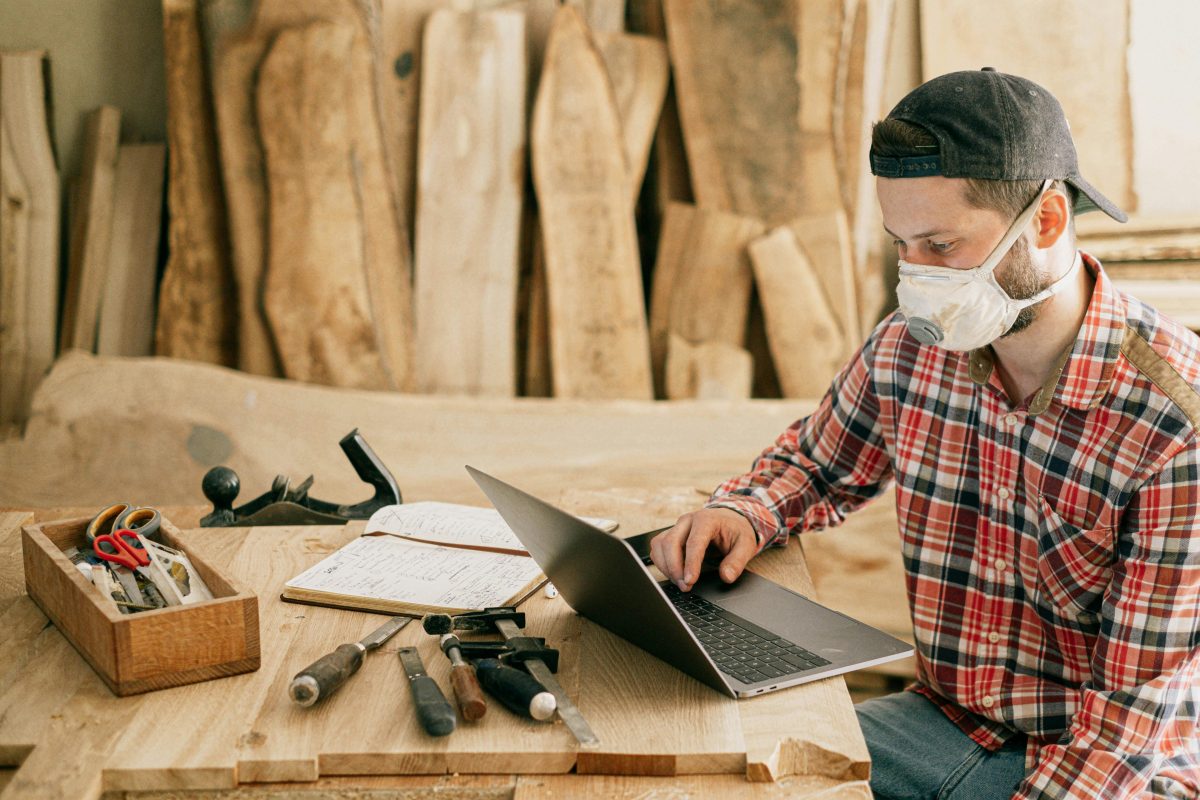Last Updated on: 14th July 2024, 09:28 am
Introduction to the Sedentary Lifestyle

The sedentary lifestyle, characterized by prolonged periods of sitting, has stealthily woven itself into the fabric of modern society. This shift, largely due to the rise of desk-bound jobs and technology-centric leisure activities, poses significant health risks. The impact on health is profound and multifaceted, affecting everything from cardiovascular health to mental well-being.
As we delve deeper into understanding these impacts, it becomes clear that the consequences of a sedentary lifestyle are not to be underestimated. With each passing day, more individuals find themselves tethered to their workstations, unwittingly contributing to a global health concern. This trend towards inactivity, fueled by the convenience of modern life, demands immediate attention and action.
The challenge now lies in reversing this tide, in finding balance and movement in a world that encourages us to stay seated. The journey towards a more active lifestyle is not just about combating the physical ailments associated with prolonged sitting. It’s about rekindling our innate need for movement, for the vitality and energy that comes from an active way of life.
The Science Behind Sitting

How Sitting Affects the Body’s Metabolism
When we sit, our body’s metabolism slows down. This deceleration is significant because it means our bodies use less energy, affecting how we process fats and sugars. Essentially, prolonged sitting can lead to an increase in the risk of obesity and type 2 diabetes. The body, designed for movement, finds its metabolic processes hampered, leading to these adverse effects.
The Link Between Sitting and Chronic Health Conditions
There’s a clear connection between extended periods of sitting and the development of chronic health conditions. Heart disease, diabetes, and certain types of cancer have all been linked to sedentary behavior. This is because sitting for long stretches can lead to increased blood pressure, high blood sugar, excess body fat around the waist, and abnormal cholesterol levels. These factors combine to create a perfect storm for chronic disease development.
Psychological Effects of a Sedentary Lifestyle
The impact of sitting all day isn’t limited to physical health; it extends to our mental well-being too. A sedentary lifestyle can lead to an increase in feelings of anxiety and depression. The lack of movement can affect mental health by reducing blood flow to the brain and lowering the production of mood-enhancing chemicals. This can make us feel less energetic and more prone to feelings of sadness or hopelessness.
In conclusion, the science is clear: sitting for prolonged periods can have detrimental effects on both our physical and mental health. It’s a silent threat that creeps up, affecting our metabolism, increasing our risk of chronic diseases, and impacting our psychological well-being. The key to combating this is awareness and action. By understanding the risks and making concerted efforts to incorporate more movement into our daily lives, we can mitigate these negative effects and pave the way for a healthier, more vibrant life.
Strategies for Reducing Sitting Time at Work

The Role of Standing Desks and Their Benefits
- Improved posture
- Increased energy levels
- Subtle boost in calorie expenditure
Transitioning between sitting and standing throughout the day encourages a healthier work environment and fosters productivity.
Implementing Walking Meetings and Their Advantages
- Enhanced creativity
- Better engagement among participants
- Health benefits of walking
This simple shift can significantly reduce sedentary time, promoting a culture of wellness within the workplace.
The Importance of Taking Regular Breaks for Stretching and Movement
Regular breaks are not just pauses; they are opportunities. Opportunities to stretch, move, and recalibrate. Integrating short, frequent breaks into your workday is crucial for stimulating circulation, relieving muscle tension, and refreshing your mind. This practice not only combats the physical drawbacks of prolonged sitting but also boosts mental clarity and focus, making it an indispensable part of a healthy work routine.
Incorporating these strategies into your daily work life can significantly reduce the health risks associated with prolonged sitting. Standing desks, walking meetings, and regular movement breaks are practical, effective measures that promote a more active, healthier lifestyle, even within the confines of the office. By making these changes, we take a stand against the sedentary habits that threaten our well-being, paving the way for a more vibrant, dynamic approach to work.
Incorporating Movement into Your Daily Routine

Simple Exercises to Do at Your Desk
- Seated leg lifts
- Desk push-ups
These simple activities can make a significant difference in how you feel.
Tips for Staying Active During the Workday
- Opt for the stairs instead of the elevator.
- Swap your traditional chair for a stability ball to engage your core muscles.
- Pace during phone calls to contribute to your daily step count.
The key is to find moments for movement in tasks that are typically sedentary.
Setting Reminders and Goals for Movement
Technology can be a powerful ally in your quest for more movement. Use smartphone apps or calendar reminders to prompt you to stand, stretch, or take a brief walk every hour. Setting daily or weekly goals, such as a specific number of steps to achieve, can also motivate you to incorporate more activity into your routine. Celebrate these milestones to encourage consistency and make movement a regular part of your day.
By integrating these strategies into your daily routine, you can combat the effects of sitting all day. Simple exercises, staying active, and setting reminders are practical steps towards a healthier lifestyle. Embrace these changes and make movement a non-negotiable part of your day.
Beyond the Office: Creating an Active Lifestyle

Engaging in Hobbies That Encourage Movement
Discovering hobbies that get you moving is a game-changer. Whether it’s gardening, dancing, or hiking, these activities not only enrich your life with joy and fulfillment but also keep your body active. They serve as a perfect counterbalance to the sedentary hours spent at work, offering both physical and mental health benefits.
The Importance of Outdoor Activities and Connecting with Nature
Stepping outside and immersing yourself in nature does wonders. Outdoor activities like cycling, walking, or even picnicking in a park play a crucial role in enhancing your well-being. They provide a natural boost to your mood, improve your physical health, and strengthen your connection with the environment. The fresh air, the greenery, and the sheer beauty of the outdoors invigorate your spirit and encourage a more active lifestyle.
How to Balance Screen Time with Active Time in Personal Life
In today’s digital age, balancing screen time with active time is essential. Start by setting specific limits on your daily screen exposure and stick to them. Replace some of your screen time with physical activities you enjoy. It could be a short walk, a yoga session, or a bike ride. Making these swaps not only reduces the health risks associated with prolonged sitting but also adds a valuable dimension of activity to your life.
Embracing an active lifestyle goes beyond just combating the sedentary nature of office work. It’s about making conscious choices every day to move more, to engage in activities that bring joy and health, and to connect with the natural world around us. By integrating movement into our daily routines and finding a balance between screen time and active time, we pave the way for a healthier, more vibrant life.
Tools and Technology to Aid in Reducing Sitting Time

Apps and Wearables: Your Personal Movement Coaches
- Imagine a tiny coach on your wrist, nudging you to stand up and move. That’s what wearable devices do.
- They track your steps, monitor your active minutes, and remind you to stand or walk after periods of inactivity.
- Sync these gadgets with smartphone apps, and you’ve got a powerful duo that charts your progress and keeps you accountable to your movement goals.
Technology: A Catalyst for an Active Lifestyle
- Technology need not be a villain in our narrative. Instead, it can be the hero, transforming sedentary habits into active ones.
- Smart furniture, like sit-stand desks, adjusts with a click, while virtual fitness classes bring the energy of a group workout to your living room.
- Even video games have evolved, with motion-sensing technology that encourages you to jump, dance, and move your way to victory.
With these tools, technology reclaims its role as a promoter of health, proving that with the right approach, it can indeed inspire an active, vibrant lifestyle. So, embrace these innovations, let them guide you to stand a little more, move a little more, and live a lot more.
In Closing
Movement is life’s essence. It renews our energy and joy. By intertwining daily activities with intentional movement, we navigate a path toward holistic well-being. This journey, blending awareness with action, transforms sedentary habits into vibrant, dynamic lifestyles. Let’s embrace this shift, making every step a stride towards a healthier tomorrow.
How to Combat Sitting All Day FAQs
Yes, standing desks can help combat the effects of sitting all day by promoting more movement and reducing the time spent sitting. They encourage you to alternate between sitting and standing, which can reduce back pain and improve posture. However, it’s important to transition gradually and use an anti-fatigue mat for added comfort.
Staying active with a sedentary job involves taking short, frequent breaks to walk or stretch and using part of your lunch break for a longer walk or quick exercise session. Consider using a standing desk or an under-desk bike to keep moving even while working. Integrating physical activity into your daily routine, before or after work, is also crucial.
Technology can help combat the effects of sitting all day through apps and devices that remind you to stand up, move around, or complete short exercises. Wearable fitness trackers can monitor your activity levels and set goals for daily movement. Additionally, online fitness programs can provide guidance for exercises that are specifically designed to counteract the effects of prolonged sitting.
Prolonged sitting can negatively affect mental health by increasing feelings of anxiety and depression. The lack of physical activity can lead to decreased endorphin levels, which are crucial for mood regulation. Encouraging regular movement and breaks can help mitigate these effects and improve overall well-being.
It’s recommended to take a break from sitting every 30 minutes. During these breaks, stand up, stretch, or walk for a few minutes to get your blood circulating and reduce the strain on your body. This habit can help mitigate the adverse effects of prolonged sitting.
Tools like standing desks, ergonomic chairs, and balance balls can help reduce the harm of sitting all day by promoting better posture and encouraging movement. Anti-fatigue mats and under-desk ellipticals or bikes are also beneficial for those looking to stay active while seated. These tools can make a significant difference in your overall health and comfort.
Sitting all day can lead to increased risks of heart disease, diabetes, and obesity. It negatively affects your metabolism and can also contribute to poor posture and back problems. Regular movement is crucial to counteract these risks and maintain overall health.
Dietary adjustments that can support a more sedentary lifestyle include consuming fewer calories, focusing on whole foods, and increasing your intake of fruits, vegetables, and lean proteins. It’s also important to stay hydrated and limit the intake of processed foods and sugars. These changes can help offset the lower calorie expenditure of a sedentary lifestyle and contribute to overall health.
Simple exercises like stretching, walking, or doing leg lifts can significantly counteract the effects of sitting. Incorporating a routine of regular physical activity, even if it’s low intensity, helps improve circulation and muscle tone. These activities are essential for those who sit for extended periods.
The best way to improve posture while sitting is to ensure your workstation is ergonomically set up, with the monitor at eye level and the chair supporting your lower back. Keeping your feet flat on the ground and your shoulders back can also help maintain a good posture. Regularly changing your sitting position can prevent strain on any one part of your body.
Orlando is a all round athlete from Australia, now resident in Germany. His sports of passion of American Football(Offensive line), weight training and indoor rock climbing where he uses his 195cm wing span to his advantage.



